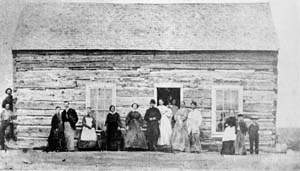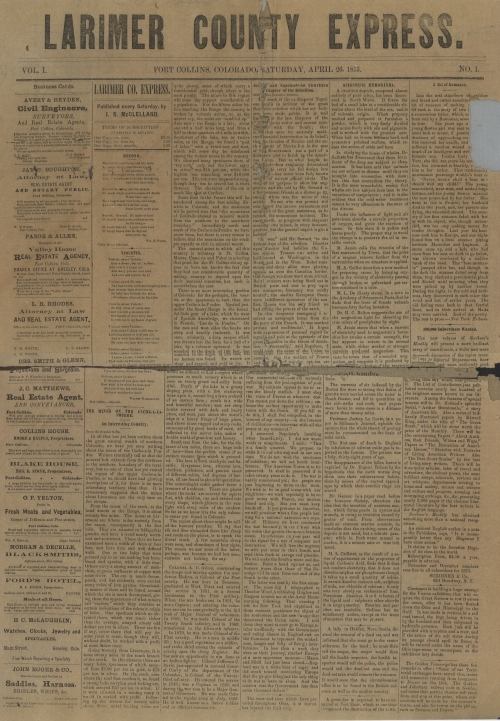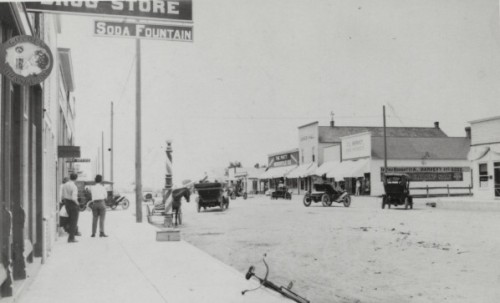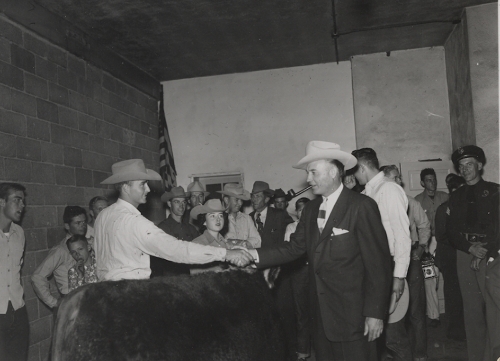by Amy Scott, Volunteer Coordinator and Director of Visitor Services
Worldwide sightings of a small doll donning a purple bonnet have prompted much whispering and curiosity. Who is this diminutive mystery woman who pops up at landmarks across the globe and, according to reports, always seems to be clutching a sack of flour?

She is the Fort Collins Museum & Discovery Science Center’s very own Auntie Stone Doll, fashioned after Elizabeth Stone, the “Founding Mother of Fort Collins.”

Elizabeth "Auntie" Stone
In 1862, Elizabeth Stone and her husband Lewis Stone traveled across the plains from Minnesota to Denver, Colorado in a covered wagon pulled by milk cows. In 1864 they moved to the frontier post that eventually grew into the Fort Collins we know today. There they built a log cabin to serve as both their private residence and an officers’ mess.

The Stone Cabin
Elizabeth, in her sixties at the time, cooked meals and baked pies for the officers. Since she took such great care of them, the men of the post came to call her “Auntie” Stone, a sobriquet that followed her for the rest of her long life. Auntie Stone was a pioneer in many respects. In addition to being a wife and a mother, she was also a suffragette, entrepreneur, landowner, and town builder.
Like her namesake, Auntie Stone Doll has a grand sense of adventure. The Museum’s good friend Cindy Reich was kind enough to show her around the sites in Ireland several years ago. In a postcard addressed to the Museum, the doll wrote: “Ireland is a most interesting place. Although it is nearly October, all the fields are very green with grass in abundance. Their cattle are fat and sleek.”
Auntie Stone Doll has traveled extensively in the U.S. and abroad. North Carolina, Brazil, South Dakota, Australia, and Disneyworld are just a few of the places she has visited.

Auntie Stone enjoying the surf in North Carolina. Photo by Beth Higgins

While vacationing in Australia, Auntie Stone Doll wonders how on earth she is going to eat this entire bacon sandwich and lamington. Photo by Cindy Reich

Basking in the sunshine at Freemantle Harbor in Australia. Photo by Cindy Reich

- Auntie Stone Doll captured during a pensive moment at Galway Bay. Photo by Cindy Reich

Auntie Stone Doll Leaving South Dakota. Photo by Cindy Reich
But why does the doll carry a sack of flour wherever she goes? Along with Henry Clay Peterson, the original Auntie Stone built a grist mill that produced flour from wheat, the first of its kind in Northern Colorado.
As you can see, Auntie Stone Doll has developed a particular affinity for oceans and beaches. Look how dreamy her eyes become whenever she is near water. Where will she go next? No one knows for sure. A Caribbean cruise is likely, but she also hopes to go camping in Colorado’s mountains at least one time this summer.
In the meantime, you will find Auntie Stone Doll resting at the Museum Store in the company of toys, books, and other wonders. Stay tuned for further adventures.





















You must be logged in to post a comment.